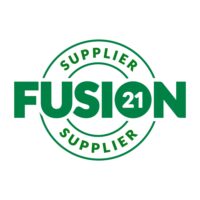Businesses warned to put Covid-19 risk management and control measures in place before re-opening

As lockdown rules on businesses begin to be relaxed, Howes Percival warns that coronavirus risk management and control measures must be in place before companies allow workers to return to the workplace.
The Government has published new Covid-19 secure workplace guidance for businesses in England. The guidance, which operates alongside current health and safety rules, contains practical advice for returning to work safely for businesses where employees cannot work from home. It covers eight types of work environment including factories, construction sites, offices, takeaways, labs, shops, vehicles and work in other people's homes.
While the guidance is non-statutory, Howes Percival is warning businesses that it should be viewed as best practice. Following the guidance is likely to demonstrate compliance with health and safety duties in respect of Covid-19.
Robert Starr, regulatory law expert and a Director at Howes Percival, explained, "The partial lifting of the coronavirus lockdown rules was welcome news for many companies. But, before they re-open, companies must consider the risks in their workplace of spreading the virus and take measures to mitigate it. For example, the ‘new normal' way of operating may include the redesign of workspaces, the introduction of one-way systems, or staggered start times to help maintain social distancing.
"Compliance with the Government's guidance will no doubt be challenging for some employers, but failure to do so could present a significant financial and reputational risk. Despite the unprecedented nature of the Covid-19 outbreak, the Government has already signified that it won't hesitate to take action against any employer who chooses not to comply with the guidance or otherwise fails to take appropriate action to control workplace risk.
"The threat of enforcement action for non-compliance is a very real one. The Government has provided the Health and Safety Executive with additional funding to allow it to monitor coronavirus compliance, including conducting random spot checks. We assume compliance monitoring will also extend to Local Authorities where they are the relevant regulator."
Robert Starr concluded, "Navigating the coronavirus pandemic and its aftermath will be a massive challenge for us all. To keep their employees and customers safe, businesses will have to adapt to new and unfamiliar ways of working. In addition, the heightened societal concern around the threat of Covid-19 could lead to increased resistance from workers and, in some cases, whistleblowing to the authorities, if they feel that they are being forced to work in difficult or inadequately protected conditions."
Covid-19 Secure Workplace guidance
Management of risk
Employers have a duty to reduce workplace risk as far as is reasonably practicable through appropriate risk control measures. Businesses should undertake a Covid-19 risk assessment and take any necessary preventative measures identified. The significant findings of the risk assessment should be shared with employees. Government guidance suggests that employers of 50 or more workers should publish the results on their website.
The guidance outlines steps which should be worked through in order as part of the assessment process and covers increased handwashing and surface cleaning, continued working from home (where possible), social distancing measures or (where not possible and the activity needs to continue) additional mitigation measures such as modifying the task, use of screens, time limiting the task and fixing teams. The guidance explicitly states that "no one is obliged to work in an unsafe environment."
Who should go to work?
People are still required to work from home unless they are in a sector where the Government is encouraging people to return to work (only where they cannot work at home). The guidance provides information on the monitoring and protection of vulnerable staff. Existing rules on self-isolation remain, therefore anyone who has Covid-19 symptoms or lives in a household with a symptomatic person must not return to work.
Social distancing measures
A key control measure to avoid the transmission of Covid-19 is maintaining social distancing in the workplace with workers keeping two metres apart wherever possible. The guidance provides practical advice on how this can be achieved and the types of things that should be considered across the different working environments including both physical and operational changes where the social distancing requirements cannot be met. The guidance also makes recommendations as to how best to manage customers, visitors, and contractors.
Hygiene
Increased frequency of cleaning and the introduction of improved hygiene measures are promoted by the guidance with employers being encouraged to consider facilities for handwashing/sanitising on entry and exit to the workplace; greater cleaning of surfaces that are touched regularly; and guidance to staff on effective handwashing procedures. There are also recommendations to assist with the receipt of deliveries into the workplace.
Personal protective equipment (PPE)
Where already in use in a workplace as part of an employer's risk management measures (for non Covid-19 risks), workers should continue to wear PPE as required. However, the guidance does not advocate for additional PPE beyond what is normally worn as a protective measure against Covid-19. In workplaces where PPE is essential, such as a healthcare setting, and for tasks identified by a risk assessment as requiring PPE, it is the employer's responsibility to provide it and ensure it fits properly.
For more information on Howes Percival's Regulatory and Compliance services visit: https://www.howespercival.com/services/regulation-and-compliance/




